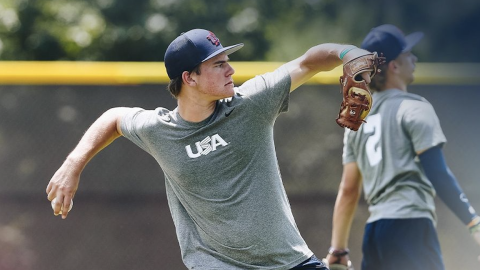Continuing Education and Coaches – a Winning Combination
Great coaches play a significant role in improving sportsmanship, teamwork, and the physical and mental wellness of athletes. They work in high-risk environments where athletes are susceptible to physical injuries, mental health concerns, and life-threatening emergencies. Unfortunately, athletics healthcare providers such as athletic trainers and sports medicine physicians, may not always be present during practices, training sessions, or competitions. Thus, leaving coaches, schools, and organizations increasingly more responsible for ensuring the health and safety of their athletes. What is not always acknowledged, is that coaching is a demanding and challenging profession that requires specific skills, knowledge, and experience to ensure the health, safety, and well-being of both coaches and athletes alike.
According to recent studies, coaches are at higher risk of stress, injuries, and burnout when compared to many other professionals and therefore require specialized, ongoing training and support. In this constant evolving and complex field that requires coaches to be skilled in various areas, health and safety training can help coaches, schools, and organizations:
- reduce risk of injury, liability, and lawsuits by providing them with knowledge on how to prevent, identify, and respond to sports-related injuries properly therefore maintaining a safe sports environment.
- improve and enhance the quality of their coaching skills and the performance of their athletes by learning new techniques pertaining to injury prevention, nutrition, and other exercise science-based topics.
- prevent burnout; as coaches who lack proper training and support are more likely to experience these symptoms which can negatively affect their mental and physical health and impact their coaching effectiveness.
- promote positive mental health by making them aware of the signs of mental health conditions, such as depression and anxiety, and the strategies required to identify, address, and respond to them.
Additionally, effective health and safety training for coaches should:
- have theoretical and practical based learning components to provide coaches with a comprehensive understanding of health and safety issues and the skills to apply them in real-life situations.
- be tailored to the specific needs and challenges of coaches in different sports, levels, and contexts.
- incorporate diverse perspectives, including cultural and gender diversity, to ensure effective communication and understanding among coaches and athletes.
- not be a one-time event but an ongoing process that includes continuous learning, feedback, and support for coaches. This can be achieved through follow-up workshops, coaching mentoring, online resources, and more.
- involve collaboration and partnership between coaches, athletes, administrators, and healthcare professionals to ensure a comprehensive and integrated approach to health and safety in sports.
Creating a culture that prioritizes athlete health, safety, and wellness is the responsibility of everyone involved in athletics, not just healthcare personnel. Continuing education for coaches on health and safety topics not only helps our coaches succeed, but it also helps our athletes as well. A true “win-win” … and in this case, winning is everything!
If you’re not sure where to begin, the team at the U.S. Council for Athletes’ Health (USCAH) can certainly help get you started! Reach out to Fran Stevenson, fstevenson@uscah.com, for more information.


